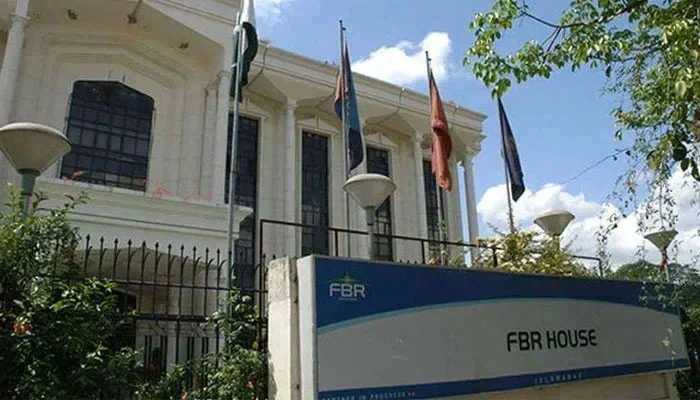An undated image of the Federal Board of Revenue (FBR) building in Islamabad. — APP/File
ISLAMABAD: After conceding mistakes that resulted in widening of discrepancies in the trade data, the Pakistan Bureau of Statistics (PBS) has started receiving trade data from the Federal Board of Revenue (FBR) through the Pakistan Revenue Authority Limited as well as Pakistan Single Window (PSW).
Now the reconciled data of the last few years will have to be shared with the World Trade Organisation and the International Monetary Fund (IMF). “The PBS has started receiving data from both PRAL and PSW,” said one top official on condition of anonymity.
One top FBR official said that they briefed the IMF review team on the occasion of their last visit to Islamabad from Sept 28 to Oct 8, 2025, whereby they raised the issue of discrepancy in the trade data that had widened to $6 billion for the last fiscal year 2024-25.
The IMF was briefed that Pakistan, like other countries, reports its international trade data on the Trade Map site maintained by the International Trade Centre (ITC). This reporting to ITC is done through the Pakistan Bureau of Statistics (PBS), which relies on data from Pakistan Customs.
The gap between imports reported by Pakistan on ITC had been gradually increasing vis-à-vis exports reported by trading partners to Pakistan during the last few years.
This difference was particularly high with export data reported by China and averaging at US$4.5 billion annually. The gap on the ITC Trade Map was widely attributed to the under-invoicing and resultant revenue leakages in imports in Pakistan. This has been a major concern for the government. Consequently, FBR, upon directives of the prime minister, formed a committee in April 2025 to investigate the discrepancies in trade data, especially in Pakistan’s imports from China.
The committee, after scrutiny of Customs and PBS data, found out that PBS relied on a programmed query to extract trade data from the WeBOC system of Pakistan Customs. This programmed query was last updated in 2017 by PRAL and covered imports of 7 types of Goods Declarations (GDs). However, over a period of time, 9 more GD types (e.g., Export Facilitation Scheme, Safe Transportation, Batch data, Temporary Imports, etc.) were introduced in the WeBOC system, which were not covered by the said query.
The resultant reporting gap was 2pc (US$1 billion) of total assessed imports in FY2020; however, it gradually reached 12pc (US$6.5 billion) of the total assessed value of imports in CY2024-25. Since the PBS was receiving and reporting incomplete import data, therefore, this led to an enhanced gap between figures reported on the ITC Trade Map by Pakistan and other trading partners.
The recent media reports have not only exaggerated the aforementioned reporting difference of trade data but have also linked it with the country’s trade deficit and illegitimate flow of foreign exchange against imports. It is, however, a fact that Pakistan’s trade deficit is determined by the SBP based on data of outward remittances through Financial Instruments (FI) issued by banks for imports.
It is also a fact that all imports have to be made through FI under the Import Policy. As such, the Trade Deficit has no linkage with PBS or ITC trade data. Moreover, the Customs assessments are invariably equal to or higher than FI values to ensure full revenue capture. As such, the actual assessed values by Customs can be higher than the import values reported by SBP.
To resolve future variations, PBS has already started using data for all types of import GDs, which would minimise trade data differences on the ITC Trade Map. Besides reporting errors, variances on Trade Map can also arise from exchange rate fluctuations, HS code differences, and ITC’s data limitations.
However, the report on this issue has cleared up misgivings about huge revenue leakages due to under-invoicing, especially in imports from China on account of ITC’s Trade Map data, said the official.
Images are for reference only.Images and contents gathered automatic from google or 3rd party sources.All rights on the images and contents are with their legal original owners.

